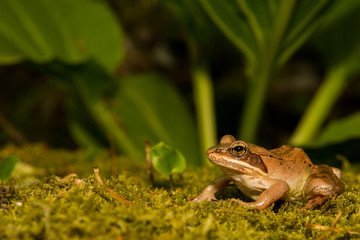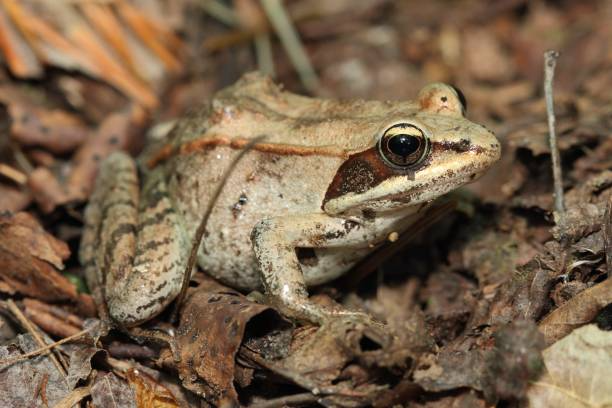Table of Contents
Scientific Classification
| Kingdom | Animalia |
| Phylum | Chordata |
| Class | Amphibia |
| Order | Anura |
| Family | Ranidae |
| Genus | Lithobates |
| Species | Lithobates sylvaticus |
| Scientific Name | Lithobates sylvaticus |
1. Description
The wood frog is a small to medium-sized amphibian known for its distinctive dark mask over its eyes, giving it a bandit-like appearance. Its coloration can range from tan to brown or reddish, which aids in camouflage within the forest environment. Generally, wood frogs measure between 1.5 and 3 inches long. Their skin is smooth and moist, allowing them to breathe by absorbing oxygen through both their skin and lungs.
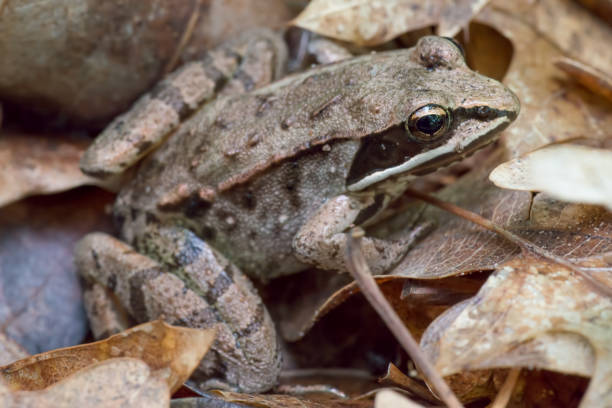
2. Distribution
Wood frogs are found throughout North America, ranging from the Appalachian Mountains in the U.S. to the boreal forests of Canada and even reaching the Arctic Circle. They rank among the most prevalent amphibians in North America, with a significant presence in the northeastern and midwestern regions of the United States.
3. Habitat
Wood frogs, as their name indicates, are mainly found in deciduous and mixed forests. They flourish in damp, wooded regions close to ponds, marshes, and slow-moving streams. During the breeding season, they rely on vernal pools, which are temporary bodies of water formed by melting snow and spring rains. These pools provide a secure, fish-free environment for their eggs and tadpoles.
4. Diet
Wood frogs eat meat. Their diet mainly includes insects, spiders, slugs, and other small invertebrates. Their diet varies depending on the availability of prey in their environment. Tadpoles mainly eat plants. They feed on algae and decaying plant matter before they change into frogs.
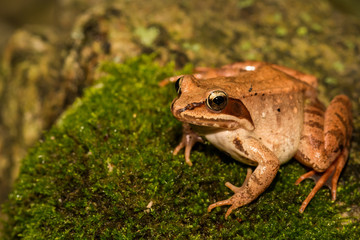
5. Behavior
Wood frogs tend to be shy and prefer solitude. They often seek refuge under leaves or in crevices to protect themselves from predators. Their activity peaks during the breeding season, when males congregate in pools and produce a distinctive quacking call to lure females. Remarkably, they can survive freezing temperatures by entering a state of suspended animation during the winter.
6. Lifespan
The lifespan of these creatures is influenced by various factors, including the presence of predators, the quality of their habitat, and the climate conditions.
7. Reproduction and Lifecycle
The breeding season for wood frogs begins early in spring, often before the last frost has occurred. Males congregate in vernal pools and call out to attract females. Once a female chooses a mate, she lays a cluster of eggs that the male fertilizes externally. A single female can produce as many as 3,000 eggs, which hatch into tiny, aquatic tadpoles within a few weeks. Over the next two to three months, these tadpoles undergo transformation into frogs, developing legs and lungs. Before long, they become juvenile frogs, ready to venture into the forest.
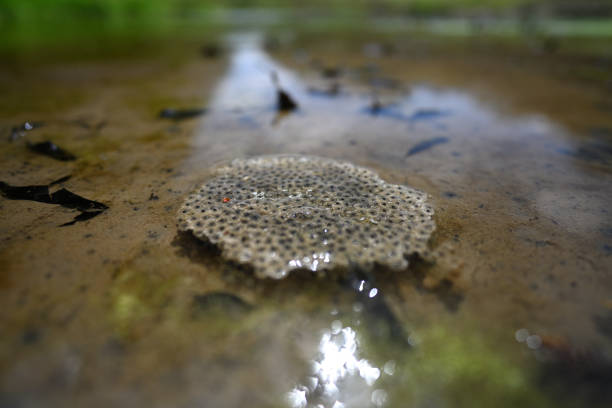
8. Predators
Wood frogs encounter a variety of predators throughout their life cycle. In the water, eggs and tadpoles are vulnerable to fish, dragonfly larvae, and water beetles. Once they reach adulthood, they face threats from birds, snakes, raccoons, and larger amphibians. Their unique coloration and the ability to freeze during winter provide them with some protection against these predators.
9. Adaptations
- Wood frogs have developed several remarkable adaptations to survive in harsh environments:
- Freeze Tolerance: The wood frog possesses an incredible ability to endure freezing temperatures. In winter, it enters a state of suspended animation, with as much as 65% of its body water freezing. Unique antifreeze compounds prevent ice crystals from forming within its cells, allowing it to thaw and resume normal activity in the spring.
- Camouflage: Their brown skin provides effective camouflage, helping them blend in with leaves and evade predators.
10. Conservation Status
The International Union for Conservation of Nature (IUCN) classifies the wood frog as a species of Least Concern. Nonetheless, their populations face ongoing threats from habitat destruction, climate change, and pollution. The disappearance of vernal pools due to deforestation and urban development is particularly concerning, as these temporary wetlands are essential for their breeding.
Conclusion
The wood frog is an extraordinary amphibian. It possesses unique adaptations that enable it to endure some of the coldest environments on the planet. Its remarkable ability to freeze completely and then come back to life in the spring showcases the incredible resilience of nature. Although this species is not currently endangered, it is essential that we take steps to protect it. Conservation efforts are crucial for ensuring its continued survival in its forest habitats.
